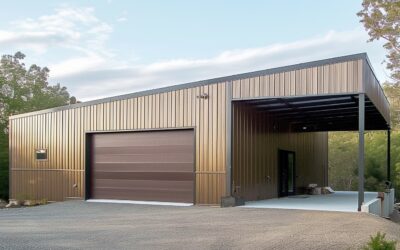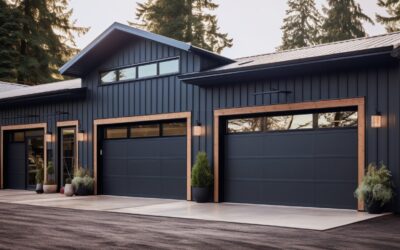Transforming Agriculture Infrastructure: The Steel Harvest
In the era of constant technological progress and rapid urbanization, we are aware of a specific, yet critical issue: transforming agriculture infrastructure. Over the years, the agrarian sector has been tormented by various environmental and functional challenges, which hinder its potential to yield profitable results. This gives rise to the essential question – is there a practical and sustainable solution that could redefine farming standards as we know them?
Reimagining the farming landscape with steel building solutions
The answer lies in the use of a phenomenal invention that has been sitting under our noses all this while – steel. Steel agricultural buildings are not only cost-effective but are also recognized for their durability, versatility, and sustainability, making them an ideal choice for farmers and agro-based industries.
Choosing steel building solutions for farms is the first step in transforming agriculture infrastructure by integrating technology, function, and design aesthetic into a cohesive structure. This modern innovation drastically reduces the risk of structural damage due to natural calamities and pests, thereby ensuring a smooth and less complicated retracement of steps in case of environmental contingencies.
Exploring the array of farm buildings
In the modern farming sphere, the functionality and structural integrity of steel manifest in several forms of farm buildings. From marquees and warehousing facilities to animal pens, storage sheds, and greenhouses, these structures embody a unique blend of aesthetic charm, reliability, and longevity.
One noteworthy advantage of steel farm buildings is that they can be specifically designed keeping in mind the individual farmer’s needs. They are easy to assemble, maintain, and expand, making them an ideal investment for both small and large-scale farming endeavors.
Embracing Pre-engineered Buildings
We often associate construction processes with heavy machinery, loads of raw materials, noise pollution, and an extensive time frame. However, the concept of pre-engineered buildings turns this perspective on its head.
Also known as manufactured or modular buildings, these structures are part of the cutting-edge solutions that are transforming agriculture infrastructure by saving time, minimizing wastage, and reducing the overall environmental impact associated with traditional farming structures.
The Double Victory
The amalgamation of steel and agriculture is proving to be a double victory not only for the farming sector but also for the environment. Steel is one of the most recycled materials on Earth, and its use in agriculture extricates the need for traditional building materials like wood, thus curbing deforestation.
Moreover, steel buildings are energy-efficient, which decreases a farm’s carbon footprint, and aligns perfectly with the principles of sustainable management of agriculture. This makes them an ally of organizations like Sustainable Agriculture Research & Education, which strive diligently to promote environmental harmony and sustainability in agriculture.
Conclusion
In conclusion, the steel harvest revolution is truly transforming agriculture infrastructure in an eco-efficient, cost-effective, and innovative way. Integrating steel buildings into agricultural practices can boost farm yields, limit environmental damage, and pave the way for a sustainable future.
As we step into a new age of farming, it’s essential to consider what legacy we want to leave behind. Do we continue down the path of traditional, environmentally-harmful methods, or do we choose to innovate and adapt to keep pace with the world, safeguarding our environment in the process? The choice, and indeed, the future, is in our hands.





